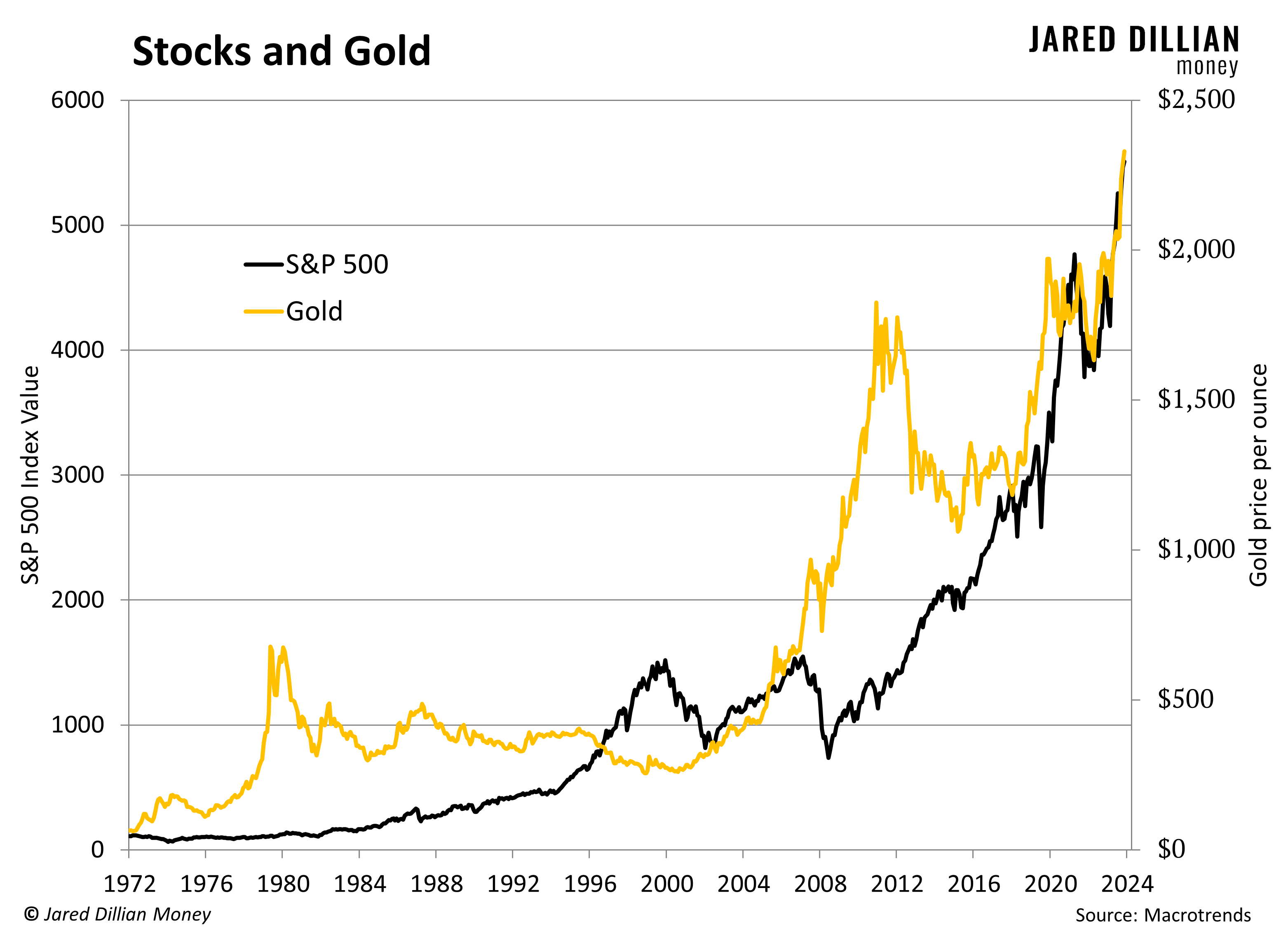
We’re a Nation of Gamblers
The United States is a nation of gamblers. It is the only place in the world where people routinely put the bulk of their savings in the stock market without knowing much, if anything, about how markets work. Some people put all their savings in the stock market, which is a terrible idea.
Yet somehow, this has become normal. Pick a random 50-year-old standing around the BBQ this afternoon, eating a hotdog, and ask him how much of his portfolio is in stocks. My guess is he will say 80%, or maybe 60%. Neither answer is good, but his financial advisor probably told him a 60/40 portfolio was the conservative approach. He doesn’t know any better.
The stock market has returned 9.5% on average over the past 50 years, and maybe that will continue. But maybe it won’t. Those of you who also read The Daily Dirtnap know I have grown increasingly concerned about the possibility of a market correction. After decades of trading, I have developed something a of “spidey sense” about these things, but I could be wrong. The plain truth is I cannot predict what the market is going to do, and neither can you. Nobody can.
So, how do you guard against the unknown?
The answer is to build a portfolio of uncorrelated assets. Correlation is a measure of how much or how little two assets move together. The scale runs from -1 to +1.
When two types of investments move in the same direction at the same time, in perfect lockstep, they have a correlation coefficient of +1, and we say they are positively correlated. When they move in the exact opposite direction, they have a correlation coefficient of -1, and we say they are negatively correlated.
Gold and stocks, for example, are negatively correlated. Not perfectly so. But if you look at the gold price over the last 50 years and how it moved compared to the S&P 500, you can see that they often moved in different directions.
Gold and stocks have a correlation coefficient of -0.22.

Note that gold and stocks frequently go up together but not down together. And when they do go down at the same time, it typically isn’t by much.
Also, the terrible years for stocks have typically been great years for gold, and vice versa. In the last 50 years, there were four years when stocks dropped more than 17%. During those years, gold rose an average of 25%. During the same period, there were four years when gold dropped more than 20%. And during those years, stocks rose an average of 20%.
The bottom line is that gold and stocks consistently move in opposite directions when one or the other crashes. That is why you need some of both in your portfolio. If one asset class goes down, you want to own something that will make up for the losses. In other words, you want a portfolio of negatively correlated assets.
But just owning stocks and gold isn’t enough. You also need some bonds, some real estate, and some cash. Build a portfolio with around 20% of each, and you will have a strongly diversified portfolio.
Of course, you also want to do this in a way that maximizes your risk-adjusted returns over time. You could try to do this on your own, but that is a tall order for anyone without a lot of market experience. My guess is you are much better at your day job—maybe it’s flying airplanes, or medicine, or real estate—than you are at building a profitable, risk-reduced portfolio of uncorrelated assets from scratch. That is perfectly fine—I can help with the portfolio part. It's what I already do for thousands of subscribers in Strategic Portfolio. You can learn more about it here.
Have a great holiday weekend.

Jared Dillian, MFA
|